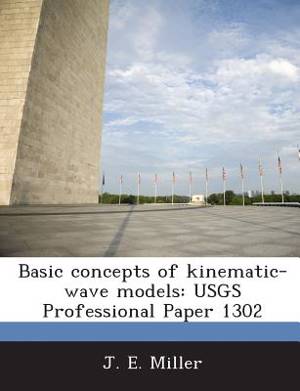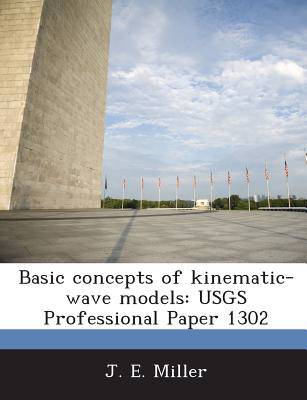
Door een staking bij bpost kan je online bestelling op dit moment iets langer onderweg zijn dan voorzien. Dringend iets nodig? Onze winkels ontvangen jou met open armen!
- Afhalen na 1 uur in een winkel met voorraad
- Gratis thuislevering in België vanaf € 30
- Ruim aanbod met 7 miljoen producten
Door een staking bij bpost kan je online bestelling op dit moment iets langer onderweg zijn dan voorzien. Dringend iets nodig? Onze winkels ontvangen jou met open armen!
- Afhalen na 1 uur in een winkel met voorraad
- Gratis thuislevering in België vanaf € 30
- Ruim aanbod met 7 miljoen producten
Zoeken
€ 21,45
+ 42 punten
Omschrijving
The kinematic-wave model is one of a number of approximations of the dynamic-wave model. The dynamic-wave model describes one-dimensional shallow-water waves (unsteady, gradually varied, open-channel flow). The report provides a basic reference on the theory and application of kinematic-wave models and describes the limitations of the model in relation to the other approximations of the dynamic-wave model. In the kinematic-wave approximation, a number of the terms in the equation of motion are assumed to be insignificant. The equation of motion is replaced by an equation describing uniform flow. Thus, the kinematic-wave model is described by the continuity equation and a uniform flow equation such as the well-known Chezy or Manning formulas. Kinematic-wave models are applicable to overland flow where lateral inflow is continuously added and is a large part of the total flow. For channel-routing applications, the kinematic-wave model always predicts a steeper wave with less dispersion and attenuation than actually occurs. The effect of the accumulation of errors in the kinematic-wave model shows that the approximations made in the development of the kinematic-wave equations are not generally justified for most channel-routing applications. Modified flow-routing models can be used which help to stop the accumulation of error that occurs when the kinematic-wave model is applied.
Specificaties
Betrokkenen
- Auteur(s):
- Uitgeverij:
Inhoud
- Aantal bladzijden:
- 40
- Taal:
- Engels
Eigenschappen
- Productcode (EAN):
- 9781287011569
- Verschijningsdatum:
- 27/03/2013
- Uitvoering:
- Paperback
- Formaat:
- Trade paperback (VS)
- Afmetingen:
- 189 mm x 246 mm
- Gewicht:
- 90 g

Alleen bij Standaard Boekhandel
+ 42 punten op je klantenkaart van Standaard Boekhandel
Beoordelingen
We publiceren alleen reviews die voldoen aan de voorwaarden voor reviews. Bekijk onze voorwaarden voor reviews.











